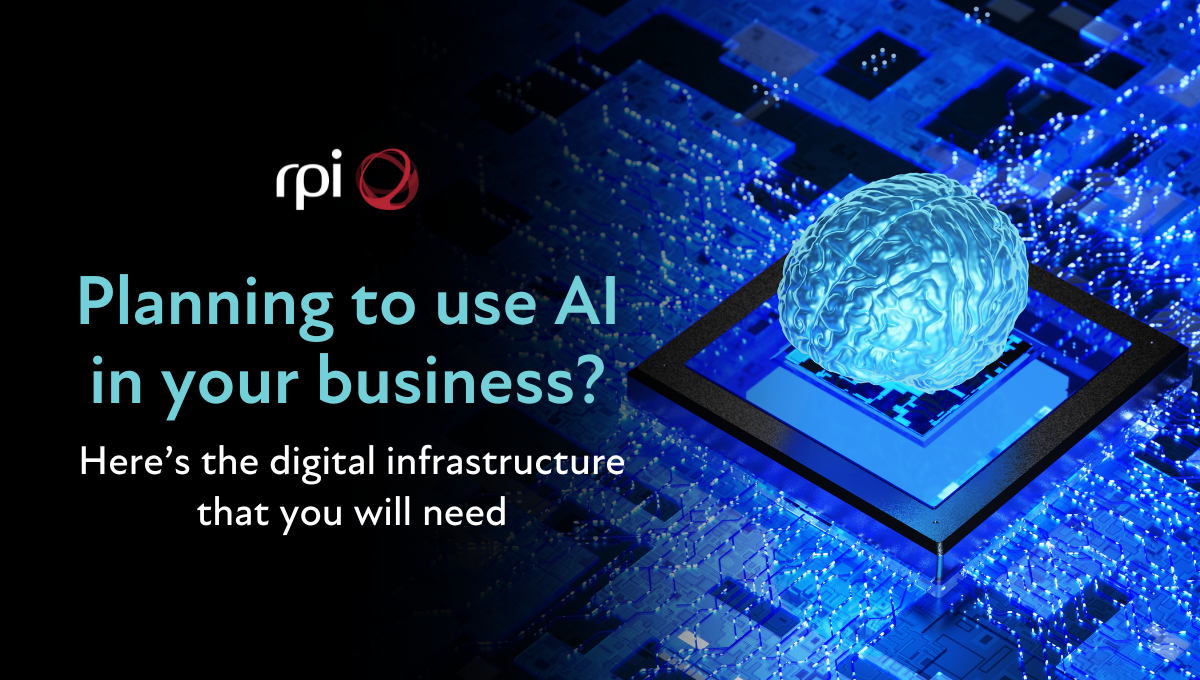Digital infrastructure refers to hardware and software systems that allow private and public institutions to operate. AI will make serious demands on your digital infrastructure due to the amount of data it processes and produces, among other factors.
Most businesses are planning to incorporate AI in a variety of ways. For example:
- 85% of businesses intend to use it in IT operations.
- 81% will integrate into cybersecurity.
- 79% plan to apply it to customer experience.
The success of such AI initiatives heavily relies on the chosen digital infrastructure.
Here is the digital infrastructure that your business will need to use AI safely, effectively and economically:
Cloud storage
AI could contribute an incomprehensible amount of data to the world. For example, by 2023, AI had already generated more pictures than all photographers had taken in the past 150 years.
If your business is planning to use AI, you will need storage for the data that it produces. Since your AI-generated data is likely to grow substantially, you will need storage that can adapt to your growing requirements.
Cloud infrastructure is perfect for the task as it is flexible enough to meet demand, so you can scale up your storage to meet your needs in a cost-effective manner.
Edge computing
In 2023, the world captured, copied and consumed 120 Zettabytes of Data. That is predicted to reach 147 zettabytes in 2024, and 181 zettabytes in 2025.
A zettabyte is one trillion gigabytes. To illustrate, one gigabyte is roughly the amount of data it would take to stream HD video for an hour. If you could stream HD videos for 114 million years, you would still not have used one zettabyte.
Traditional bandwidth and latency can’t handle the level and volumes of data that will come from the increased use of AI in businesses. Edge computing places computation and data storage closer to where it was generated, as opposed to a central data centre, so results can be much closer to real-time than would otherwise be possible.
AI can also be used in edge computing. Edge AI is the use of AI in devices (like Internet of Things devices) so that the algorithms can perform computations near where the data is generated.
Security
It’s well documented that AI risk is substantial. Human intelligence is powerful yet exploitable, and the same is true for artificial intelligence. AI is much faster, so it multiplies errors and biases more prolifically.
There are many kinds of attacks on (or using) AI, including:
- Data poisoning, where attackers contaminate datasets to make AI output harmful.
- Prompt injection attacks, in which attackers give the AI inputs that might make it reveal sensitive information or behave in a way that is damaging to an organisation.
- Resource exhaustion, in which attackers overload an AI to slow down the system and limit its availability.
- Pipeline attacks, when cyber criminals trace the sources of AI’s input data to find sensitive and valuable data or interrupt the data flow and disrupt the AI’s function.
It is crucial for security to evolve along with AI and its risks in businesses.
How to plan, manage and future-proof your AI digital infrastructure
Anticipating your digital infrastructure needs requires technical understanding, commercial vision and experience in delivering transformative projects. People with these sought-after attributes are rare and in great demand, but thanks to RPI’s 25-year heritage in sourcing technology talent, we are uniquely positioned to find the right people for your business.
Contact people@rpint.com to start the search for the specialists that will drive the developments that your infrastructure and AI initiatives will demand.



